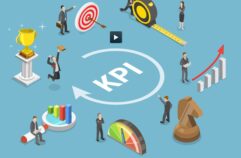Algorithm updates in SEO refer to changes made to the search engine’s algorithms that determine how websites are ranked and displayed in search results. These updates can have a significant impact on website traffic, visibility, and ultimately, business success.
Search engines like Google, Bing, and Yahoo regularly update their algorithms to provide users with the most relevant and high-quality search results. Algorithm updates can affect various factors that influence search rankings, such as keyword usage, content quality, backlinks, mobile-friendliness, user experience, and more.
SEO professionals and website owners need to stay up-to-date with algorithm updates to ensure that their sites comply with the latest ranking factors and avoid penalties for violating search engine guidelines. Adapting to algorithm updates may involve making changes to website design, content strategy, link building practices, or other SEO tactics.
Some of the major algorithm updates that have had a significant impact on SEO include Google Panda, Penguin, Hummingbird, Pigeon, and RankBrain. These updates have prioritized factors such as quality content, natural backlinks, user intent, and mobile responsiveness while penalizing tactics such as keyword stuffing, link spamming, and low-quality content.
What is the frequency of Google algorithm updates?
Google algorithm updates do not follow a fixed schedule or frequency, as they are driven by a continuous process of testing, experimentation, and feedback. Google updates its algorithm several times daily, but most of these updates are minor changes that have little impact on search results.
However, Google also releases major algorithm updates that can significantly affect search rankings and traffic. These updates are typically announced in advance and given a name, such as Panda, Penguin, Hummingbird, or Fred. The frequency of these major updates can vary widely, from a few times a year to several times a month.
Google has also indicated that it makes more than 500 changes to its algorithm each year, but not all of these changes are announced or publicly confirmed. Some updates may only affect certain websites or queries, while others may have a global impact on all search results.
SEO professionals and website owners need to stay informed about the latest algorithm updates and understand how they may affect their website’s rankings and traffic. It is also essential to follow best practices for SEO and focus on creating high-quality, relevant content that meets user needs and aligns with search engine guidelines.
Actions to take after an algorithm update:
If your website’s rankings and traffic have been affected by a search engine algorithm update, there are several actions you can take to diagnose and address the issue. Here are some general steps to consider:
- Identify the update: The first step is to confirm whether there has been an algorithm update and which update may have affected your site. You can check for announcements from the search engine, as well as industry blogs, forums, and SEO news websites. You can also compare your site’s traffic and rankings with historical data and industry benchmarks.
- Analyze the impact: Once you have identified the update, assess how it has affected your site’s performance. Look for changes in organic traffic, keyword rankings, click-through rates, bounce rates, and other key metrics. Check for any issues with your site’s content, structure, or technical performance that may have triggered the penalty.
- Check for violations: Review your site’s content and link profile to ensure that it adheres to search engine guidelines and does not violate any of its rules. Look for any instances of keyword stuffing, cloaking, link schemes, or other black hat tactics that may have triggered the penalty. Address any violations immediately and make the necessary changes to avoid future penalties.
- Improve content and user experience: Focus on improving your site’s content and user experience to meet the latest search engine standards. Provide high-quality, relevant, and useful content that satisfies user queries and engages them. Optimize your site’s structure, navigation, speed, and mobile-friendliness to improve user experience and reduce bounce rates.
- Build high-quality links: Focus on building high-quality, natural links that demonstrate your site’s authority and credibility. Avoid low-quality or spammy links that may trigger penalties or harm your site’s reputation. Use ethical and white-hat link building tactics such as guest blogging, influencer outreach, and content marketing to attract high-quality links.
- Monitor and adapt: Keep track of your site’s performance and adapt your SEO strategy as needed. Monitor changes in search engine algorithms, industry trends, and user behaviour to stay ahead of the curve. Continually test and refine your SEO tactics to improve your site’s rankings, traffic, and user engagement.
Remember, recovering from a search engine penalty can take time, effort, and patience. By following these steps and focusing on ethical, user-centric SEO practices, you can improve your site’s search engine rankings and traffic over time.



